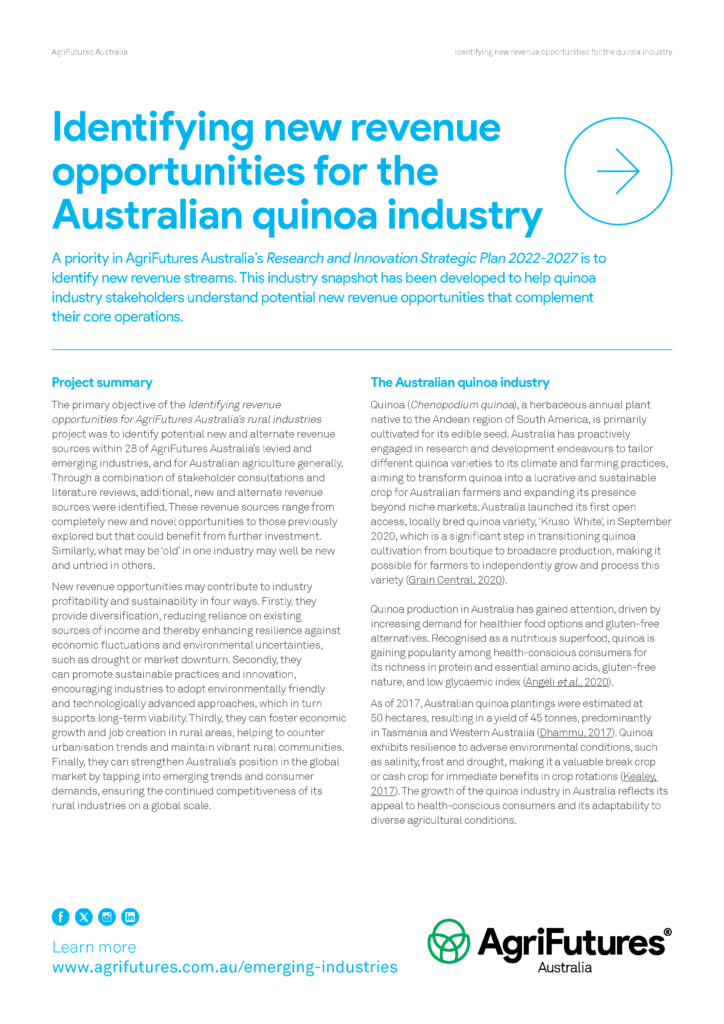The primary objective of the Identifying revenue opportunities for AgriFutures Australia’s rural industries project was to identify potential new and alternate revenue sources within 28 of AgriFutures Australia’s levied and emerging industries, and for Australian agriculture generally. Through a combination of stakeholder consultations and literature reviews, additional, new and alternate revenue sources were identified. These revenue sources range from completely new and novel opportunities to those previously explored but that could benefit from further investment. Similarly, what may be ‘old’ in one industry may well be new and untried in others.
New revenue opportunities may contribute to industry profitability and sustainability in four ways. Firstly, they provide diversification, reducing reliance on existing sources of income and thereby enhancing resilience against economic fluctuations and environmental uncertainties, such as drought or market downturn. Secondly, they can promote sustainable practices and innovation, encouraging industries to adopt environmentally friendly and technologically advanced approaches, which in turn supports long-term viability. Thirdly, they can foster economic growth and job creation in rural areas, helping to counter urbanisation trends and maintain vibrant rural communities. Finally, they can strengthen Australia’s position in the global market by tapping into emerging trends and consumer demands, ensuring the continued competitiveness of its rural industries on a global scale.
Industry-specific challenges
Specific insights relating to the Australian quinoa industry include:
1. The lack of adequate quinoa processing facilities and technology has led to unfeasible processing costs. The small size of the industry makes it challenging to secure the investment required to improve processing, restricting its ability to lower costs.
2. Limited availability of suitable quinoa varieties for Australian conditions has restricted the industry’s ability to secure seed integrity for commercial production.
3. The industry currently lacks coordination to champion development, establish precise product specifications, offer agronomic advice and information to new growers, and stimulate consumer demand, which presents a significant barrier to entry and industry development.
Industry-specific opportunities
Specific opportunities relating to the Australian quinoa industry include:
1. Developing standardised seed specifications for domestically grown quinoa would build trust among stakeholders and promote a robust and reputable market with consistent product quality.
2. Utilising the by-products of quinoa production and processing, such as saponin, husks and leaves, presents opportunities for growers and associated stakeholders to generate income. However, there are challenges in efficiently extracting and purifying these by-products; further research is required to unlock their full value.
3. With 80% of Australian consumers unfamiliar with quinoa, consumer education programs are essential to stimulate demand. Much existing demand is met through imported quinoa, driven by consumer preference for ‘royal quinoa’, i.e. quinoa cultivated in Bolivia’s high-altitude, dry salt flats, including areas such as Salar de Uyuni and Salar de Coipasa. Branding around freshness and quinoa being locally sourced will help producers receive premium prices for their products.





